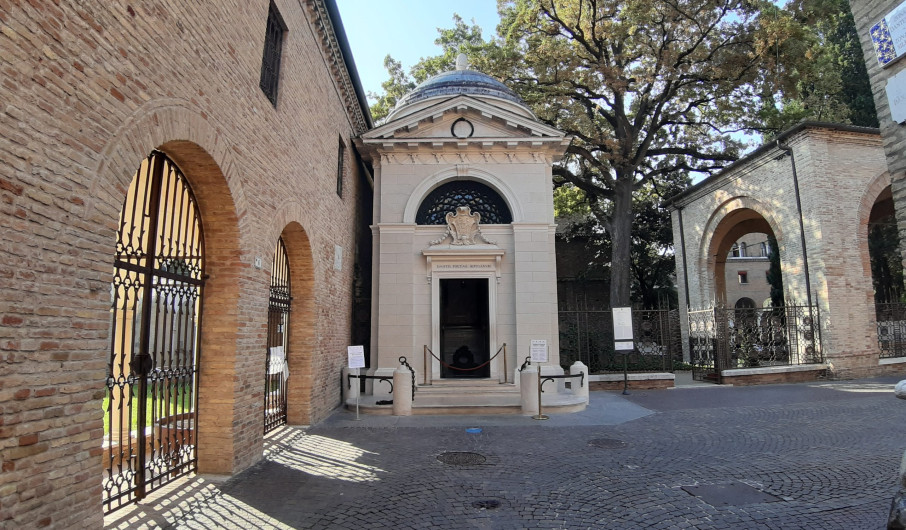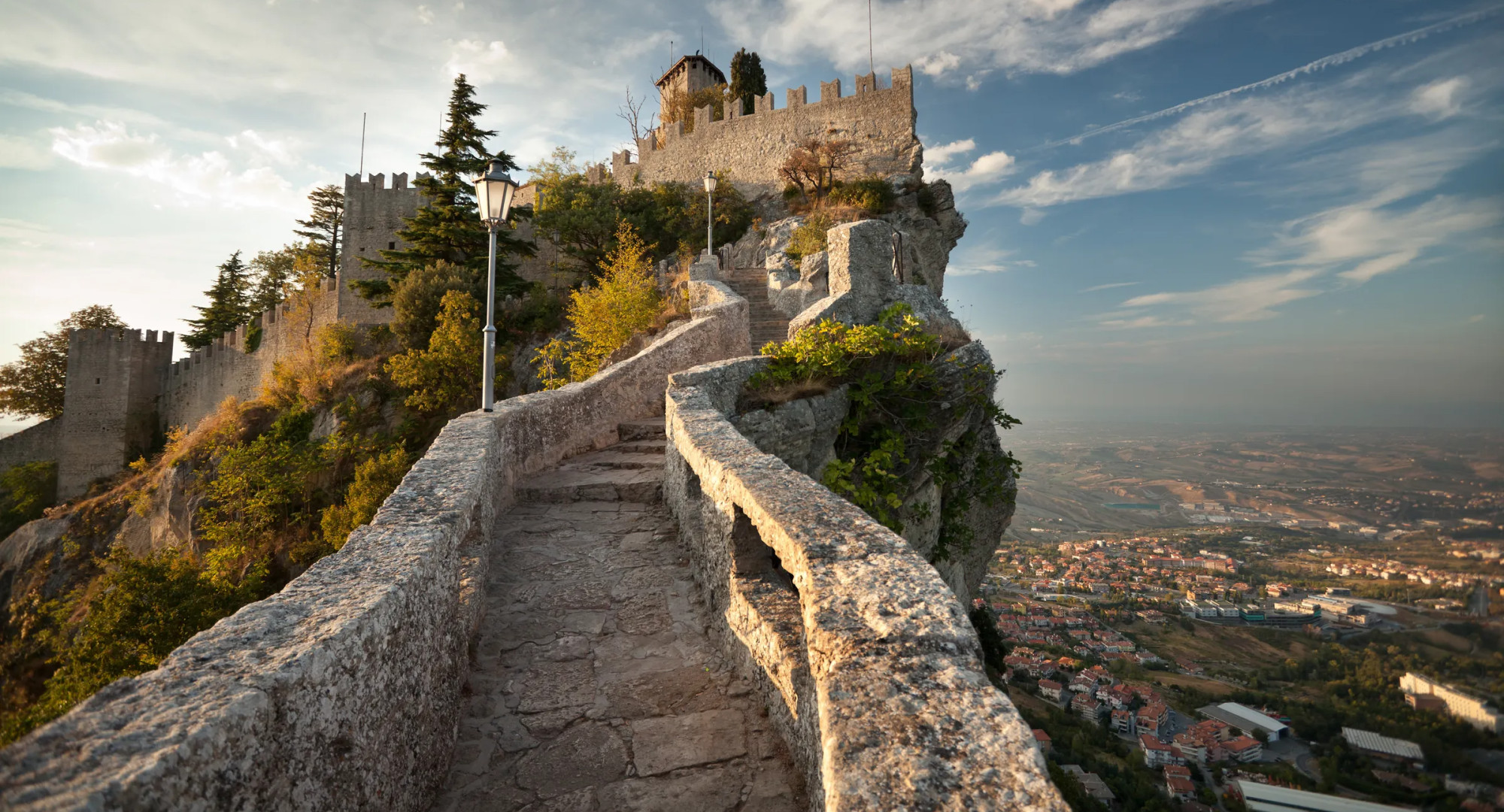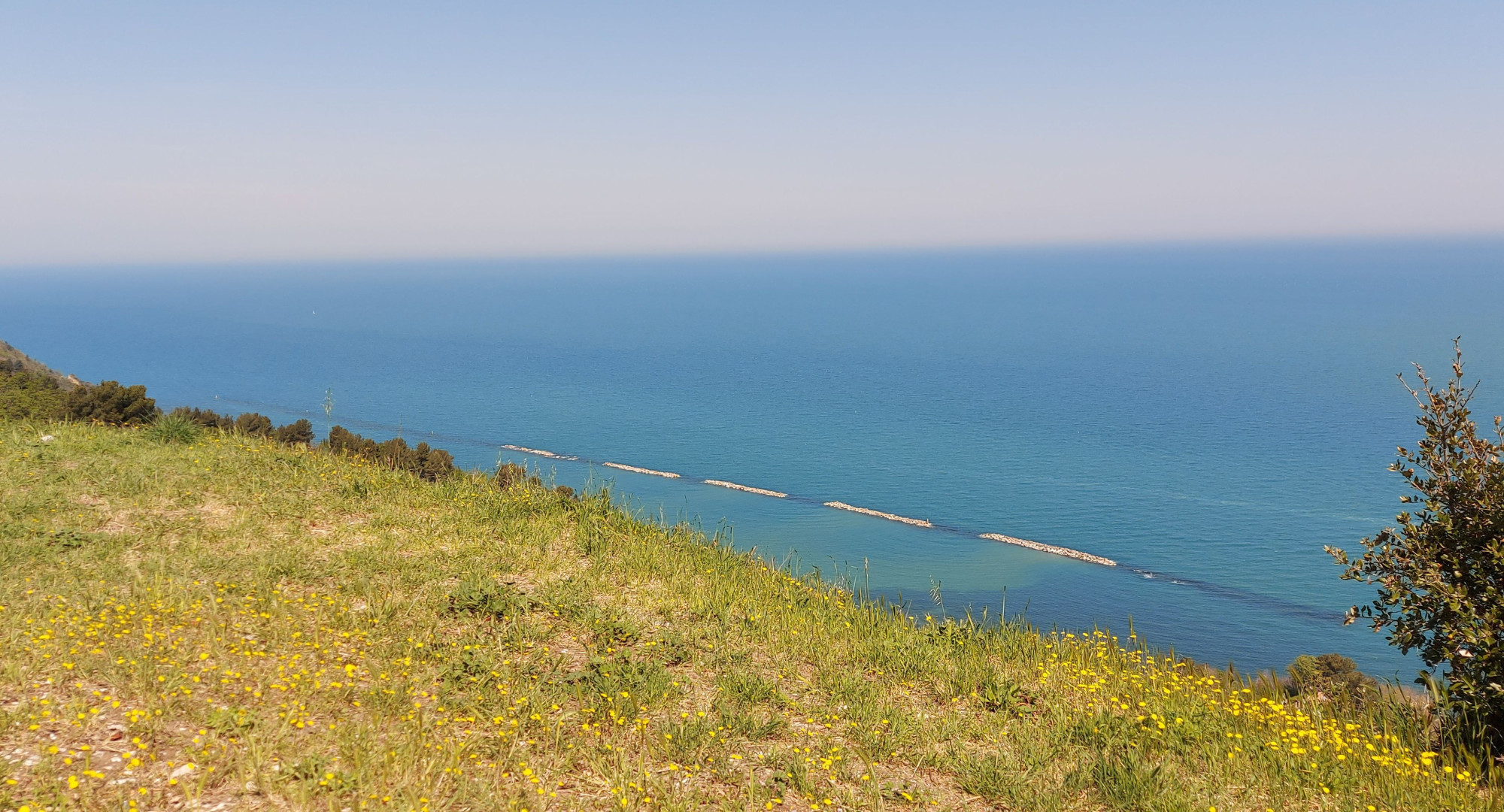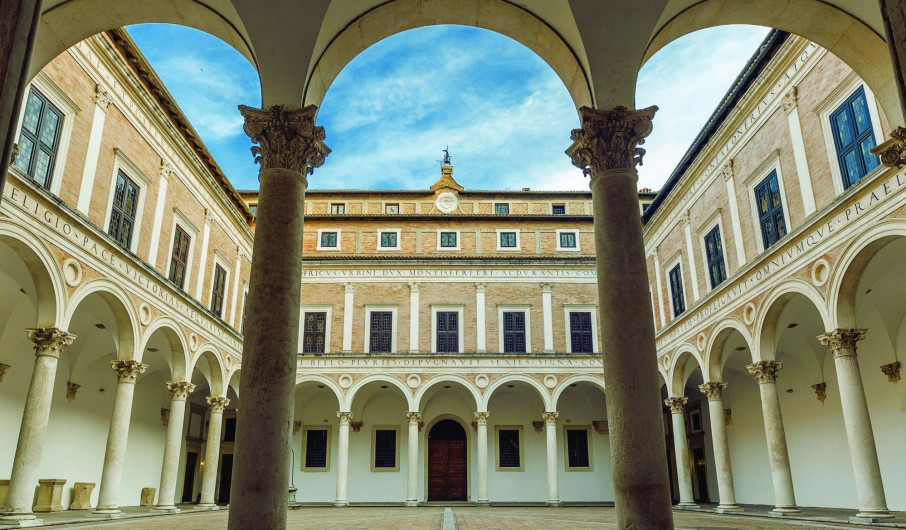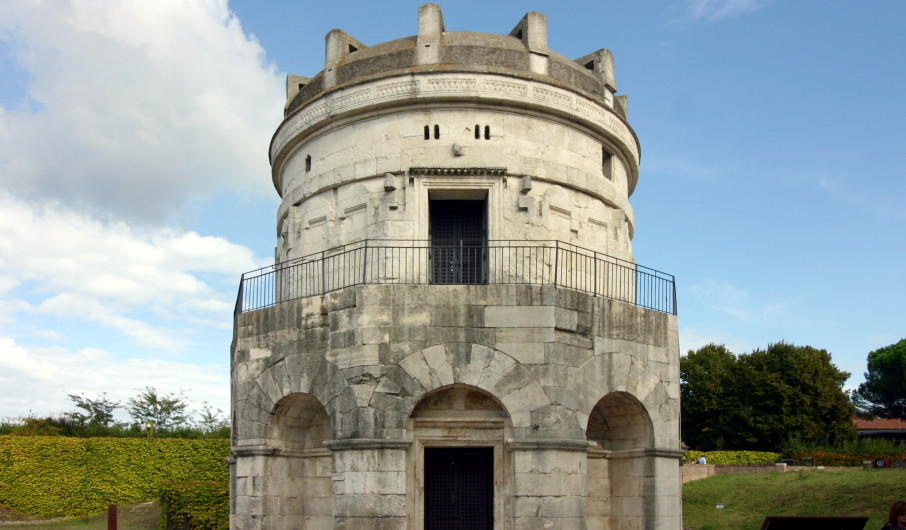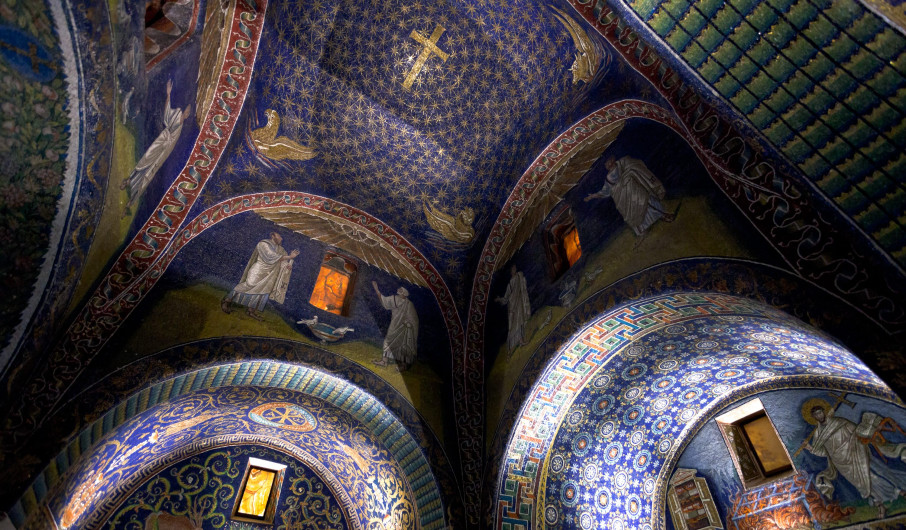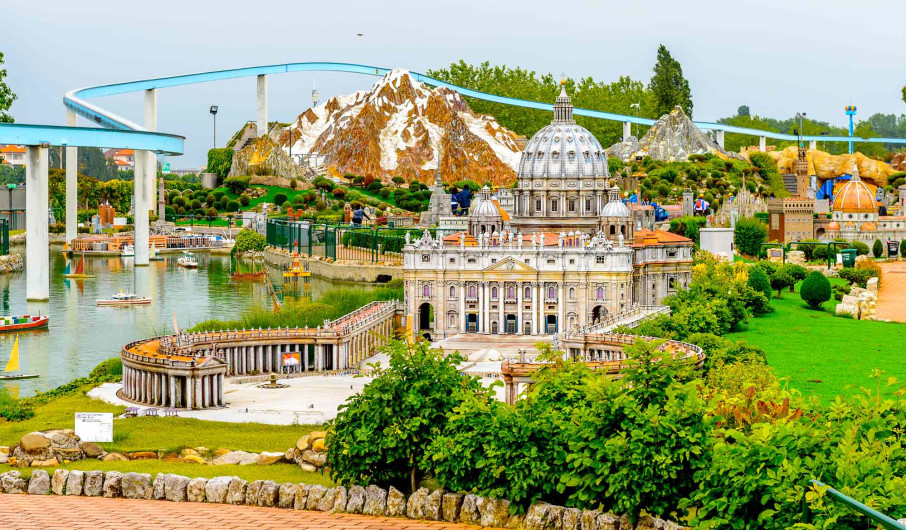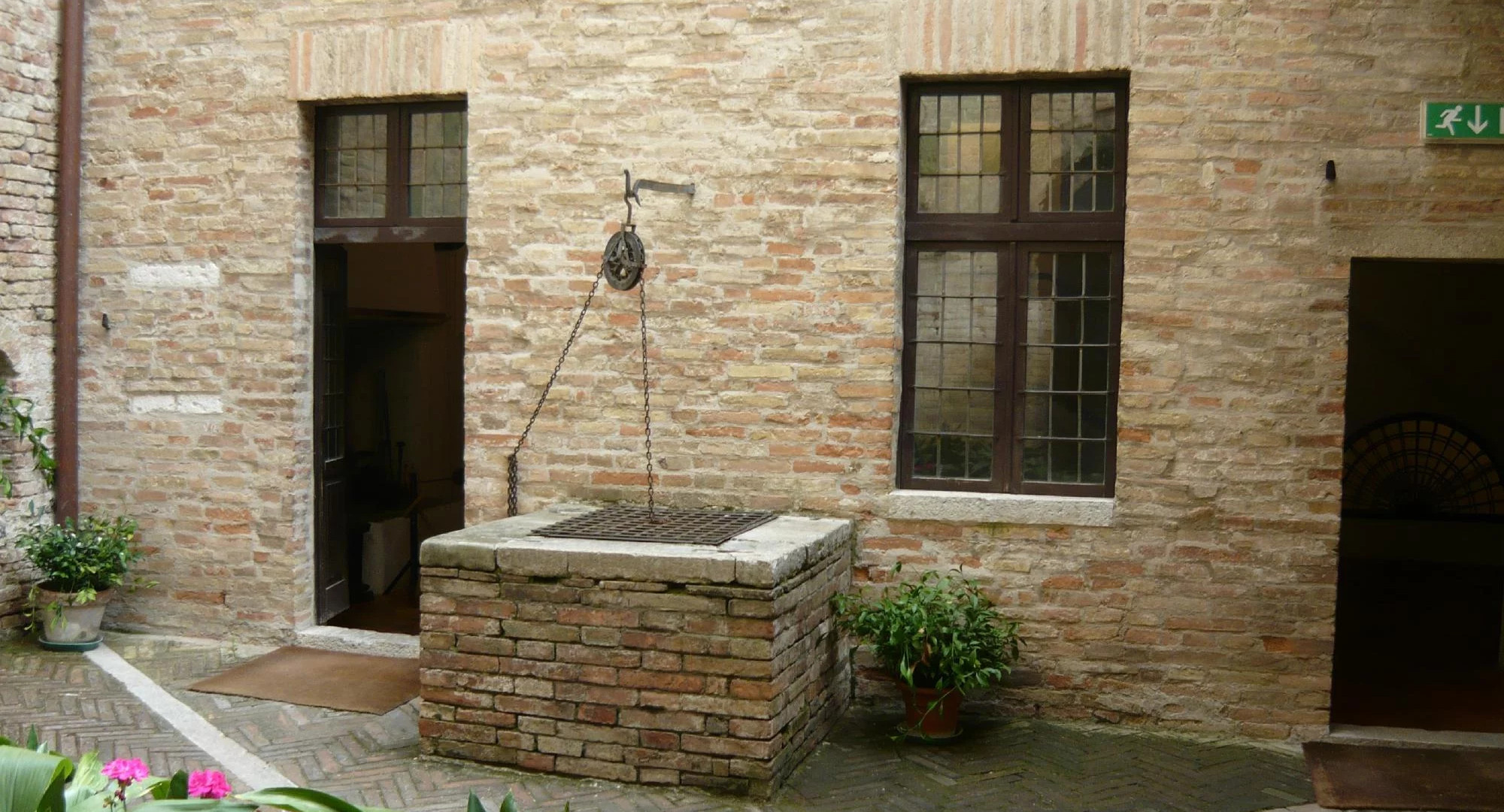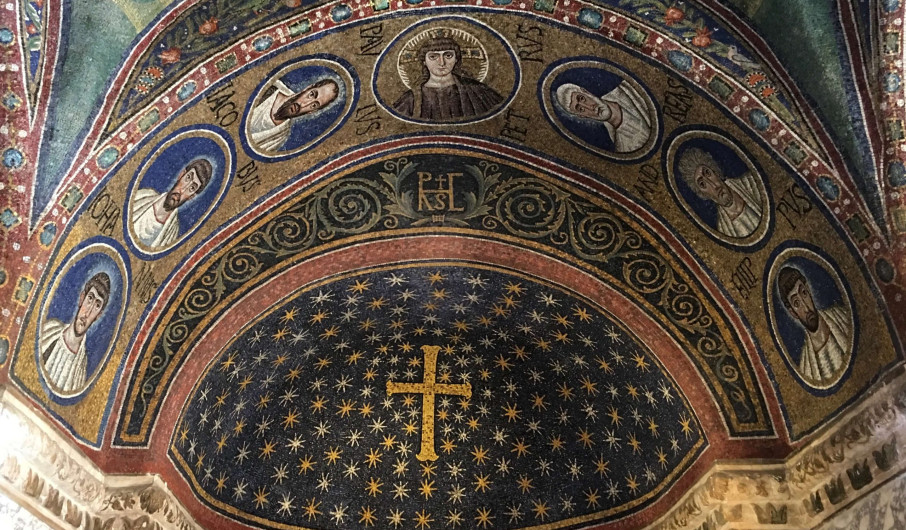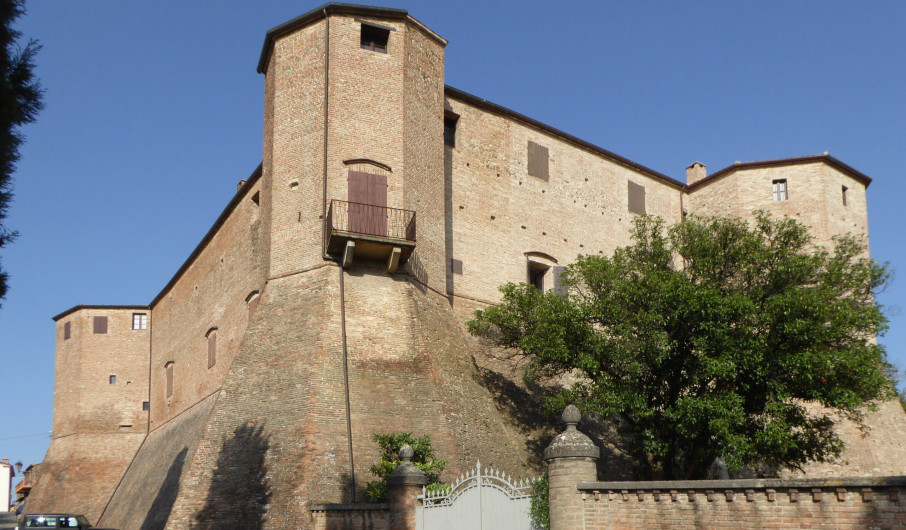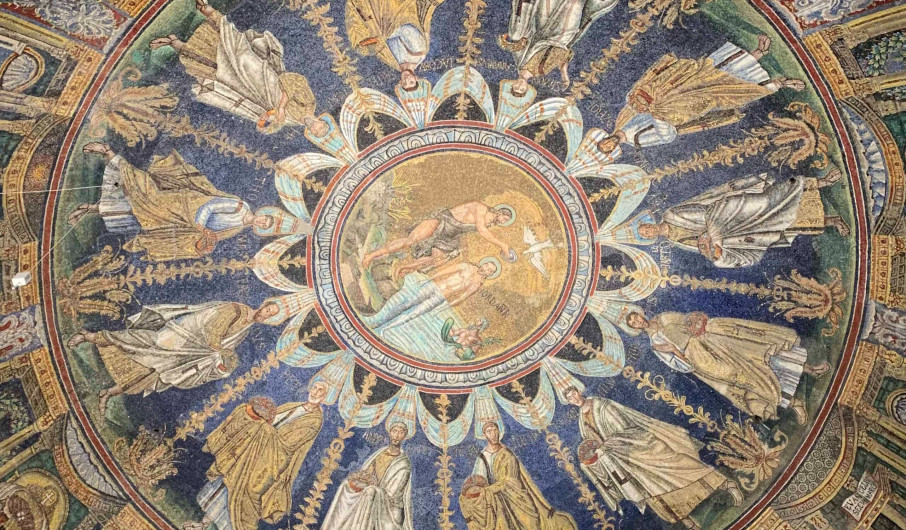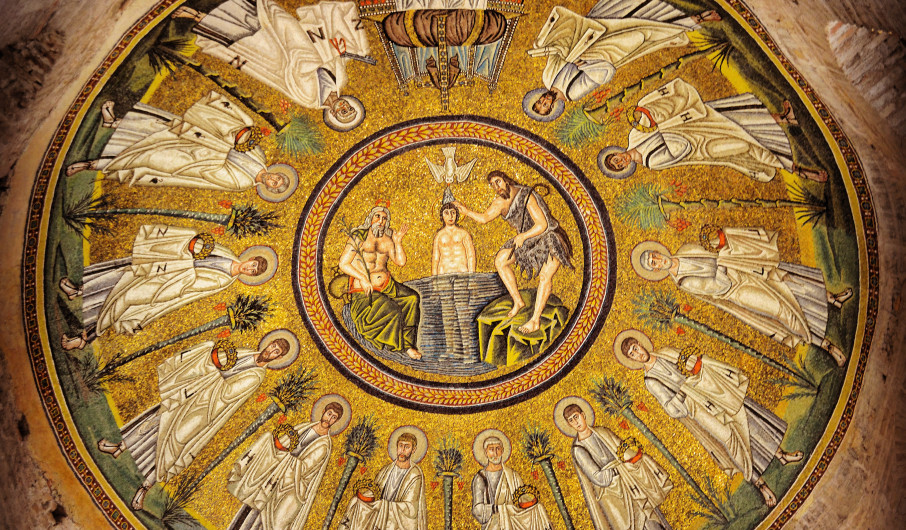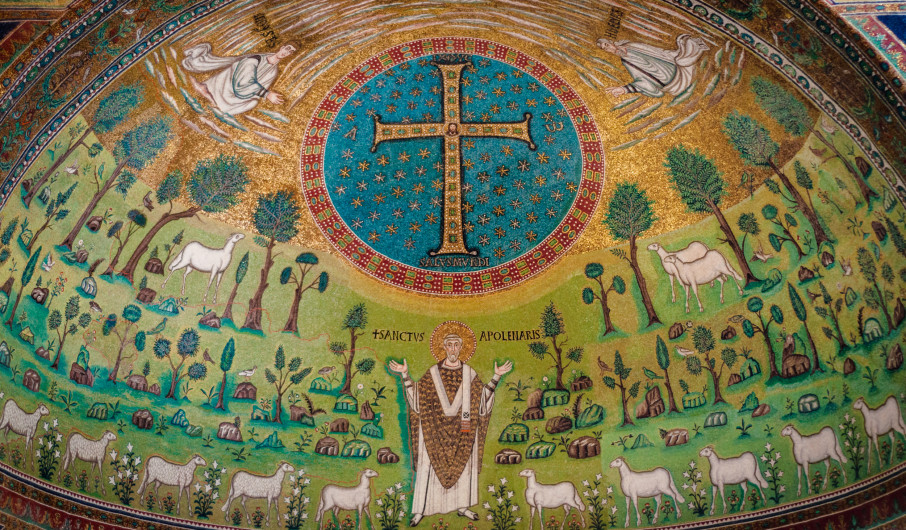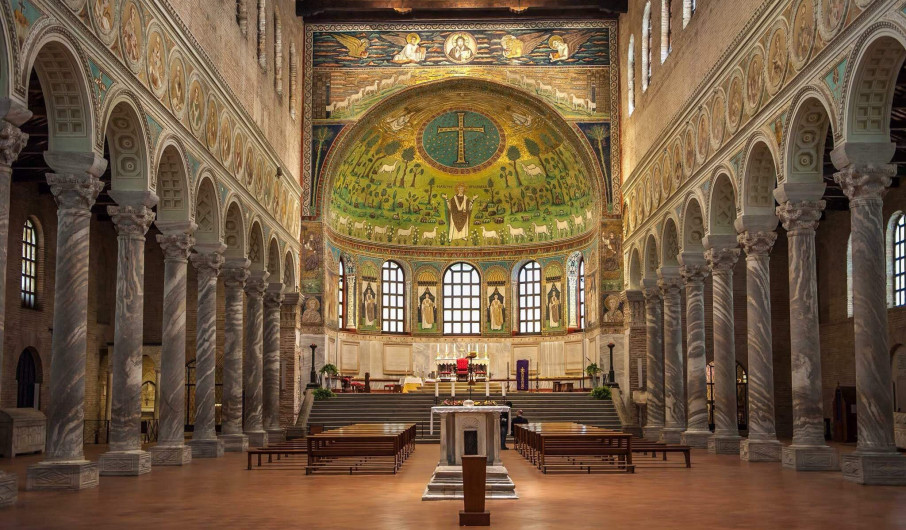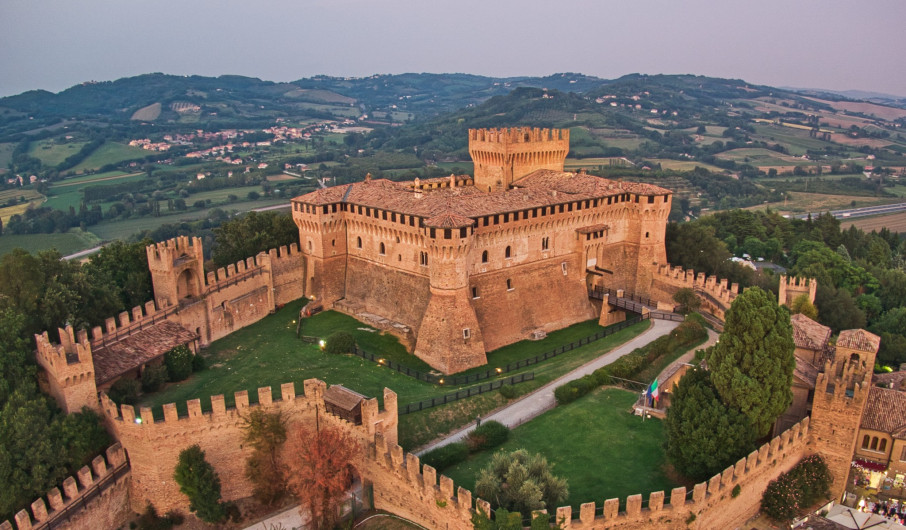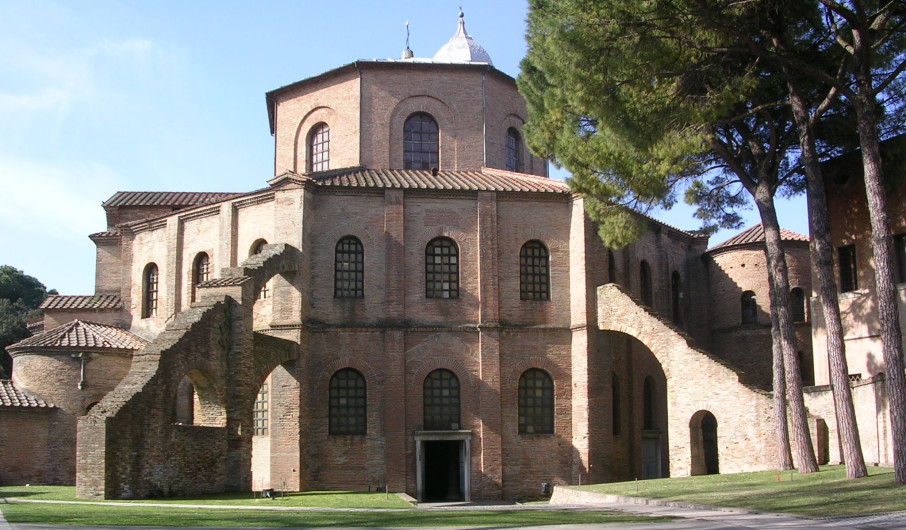Hinterland and surroundings
Here is a list of some places of interest belonging to the hinterland and surrounding areas.
Santarcangelo di Romagna: Medieval village characterized by narrow paved streets and a beautiful historic centre, where you can visit the Church of San Michele Arcangelo and the Rocca Malatestiana.
Castello di Montebello: This medieval castle, located a few kilometers from Rimini, located on the top of a hill, was built in the 12th century and features numerous rooms, towers and secret passages. It is known for its legends and mysterious stories. According to legend, the famous Count Azzurro lived here.
Rocca di San Leo: This ancient medieval castle located on a limestone cliff dominates the Marecchia valley and was one of the most important places in the history of Romagna. The Rocca di San Leo hosted famous people such as Dante Alighieri and the Count of Cagliostro. Today, the Rocca has become an important tourist and cultural site, hosting exhibitions, events and theatrical performances. The view from the top of the Rock is simply breathtaking!
San Marino: Autonomous republic surrounded by Italian territory. It offers an incredible panoramic view from the top of Mount Titano, where the fortified citadel is located.
Parco Naturale del Monte San Bartolo: Natural park that extends for approximately 1600 hectares along the Adriatic coast. It offers beautiful beaches, nature trails and spectacular sea views.
Casa Natale di Raffaello: Located in the heart of the historic center of Urbino, this house museum is where the famous Renaissance painter Raffaello Sanzio was born in 1483. The museum features works of art, documents and personal objects of Raphael and his family, offering an immersive unique in the life and work of the great artist.
Palazzo Ducale: Located in the city of Urbino, the Palazzo Ducale was built starting from the 15th century and represents one of the greatest examples of Italian Renaissance architecture. The palace houses the National Gallery of the Marche, with a rich collection of Italian and foreign works of art, including masterpieces by Piero della Francesca, Raphael, Titian and Caravaggio. In addition to the gallery, the palace also offers the possibility of visiting the chapel and the palace rooms, furnished with period furniture and frescoed decorations.
Gradara: Medieval village famous for its imposing castle which dominates the Conca river valley. The walled citadel still retains its original appearance.
Castel di Mezzo: Small medieval village located on the top of a hill. It still retains the tower of the ancient medieval castle.
Fiorenzuola di Focara: Located in the center of the Monte San Bartolo Regional Natural Park, on a rocky spur overlooking the Adriatic Sea where you can admire a beautiful panoramic view of the coast and from which some small roads lead to the shore, a place uncontaminated by mass tourism.
Let's also take a look at some interesting places in Ravenna.
Eight of the monuments that we are going to see are part of the UNESCO World Heritage Site in Ravenna: the Basilica of San Vitale, the Mausoleum of Galla Placidia, the Basilica of Sant'Apollinare Nuovo, the Basilicata of Sant'Apollinare in Classe , the Mausoleum of Theodoric, the Archbishop's Chapel, the Neonian Baptistery and the Arian Baptistery. These sites have been recognized as outstanding examples of Byzantine art and architecture, and represent some of the most important works of art of the Late Antique period in Europe.
Basilica di San Vitale: It is one of the most important churches in Ravenna, and represents a magnificent example of Byzantine art. Built in the 6th century, the basilica features a splendid frescoed dome, with Christian iconography that recalls the ancient mystery of faith. Among the main attractions of the church, the mosaics representing the emperor Justinian and the empress Teodora also stand out.
Mausoleo di Galla Placidia: It is another place of great charm, located near the Basilica of San Vitale. This mausoleum represents one of the masterpieces of early Christian art, with its extraordinarily well-preserved mosaics, which cover every surface of the building. The mausoleum was built at the end of the 4th century, and is dedicated to the daughter of Emperor Theodosius I.
Basilica di San'Apollinare Nuovo: It is a 6th century church, best known for its Byzantine mosaics. The basilica features two rows of mosaics that extend along the nave, and which represent scenes from the life of Christ and the Saints. Among the most evocative works, the depictions of Saint John the Baptist, Saint Peter and Saint Paul stand out.
Basilica di Sant'Apollinare in Classe: It is instead a church that dates back to the 8th century, and is located a few kilometers from the center of Ravenna. The church is famous for its mosaics and basilica-style architecture, with a large central nave and two side naves. Among the most evocative mosaics, those representing Sant'Apollinare and the archangel Michael stand out.
Mausoleo di Teodorico: It is another place of great charm, located a few kilometers from the center of Ravenna. This construction dates back to the 6th century, and was built in honor of Emperor Theodoric the Great. The mausoleum features Gothic-style architecture, with a large pointed arch and mosaics depicting Theodoric's court.
Tomba di Dante: It is a monument dedicated to the great poet, who spent the last years of his life in Ravenna. The tomb is located in the Basilica of San Francesco, and was built in 1780. The tomb was sculpted in marble and features a figure of Dante in bas-relief, with an inscription that reads: "Dante Alighieri, in Ravenna, with a heart who loved him so much."
Cappella Arcivescovile: From Ravenna is an extraordinary work of art, created in the 6th century. The chapel features mosaics depicting biblical scenes, including the Annunciation and the Nativity of Jesus. The chapel's frescoes represent one of the best examples of early Christian art in Italy, and are particularly noted for their expressive intensity and beauty of detail.
Battistero Neoniano: It is a baptismal church dating back to the 5th century, located in the heart of Ravenna. The church is best known for its mosaics, which depict scenes from the New Testament, including the Baptism of Christ. Among the most evocative attractions of the church, the stucco decorations and the octagon-shaped dome also stand out.
Battistero degli Ariani: It is instead another Ravenna baptistery, built in the 5th century. The church is best known for its mosaics, which represent scenes from the life of Jesus and the Apostles. The structure of the baptistery has an octagonal plan, with a large frescoed dome representing the descent of the Holy Spirit on Jesus during his Baptism.

